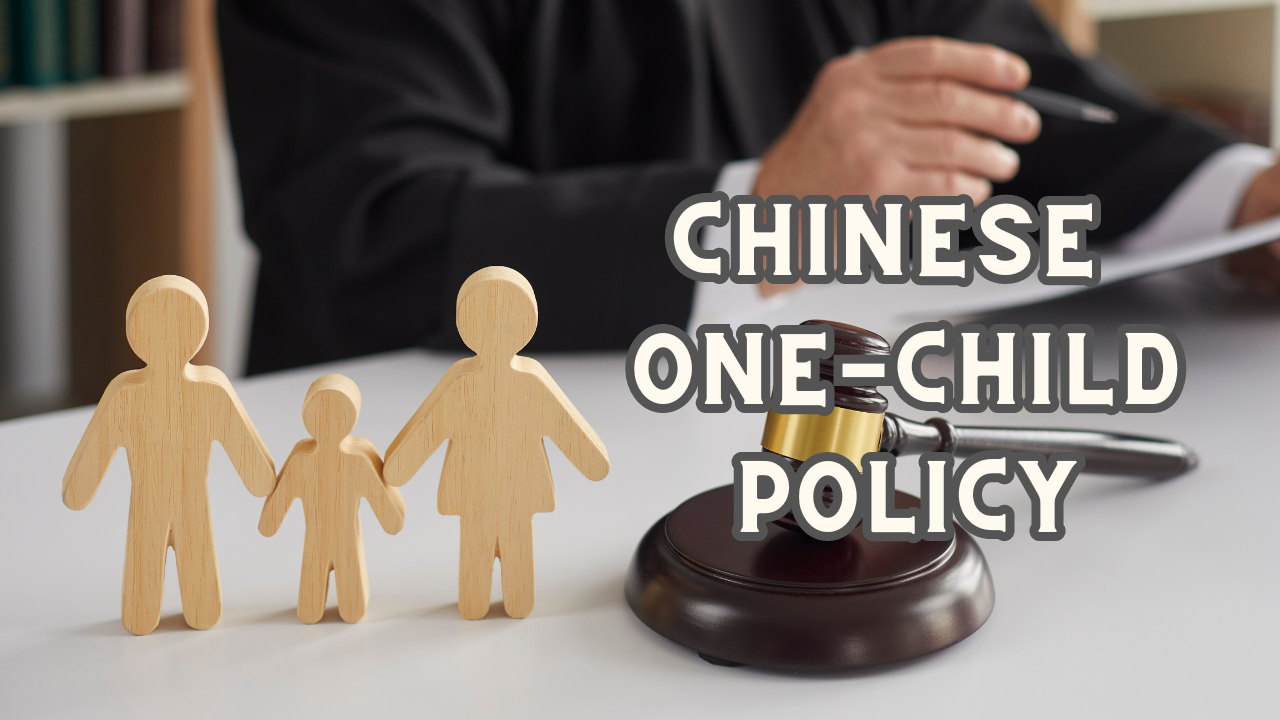Table of Contents
ToggleChinese one-child policy
The Chinese one-child policy was implemented in the late 1970s, when the country was beginning to worry about the possible impact of a fast population increase on its welfare services and state-planned economy. Families were prohibited from having more than one child for many years; this rule was strictly enforced, frequently in a terrible way. Even though the Chinese one-child restriction was loosened in 2016 and revised again in 2021, many families that were negatively impacted by it still carry the scars from that time.

More From us: 7 People Injured in the Israeli Tank Incident on Egypt Border: Unraveling the Accidental Confrontation
Israeli Tank Incident on Egypt Border
The Trauma of Multiple Pregnancies
Families that ventured to have more than one child suffered greatly as a result of the strict enforcement of the Chinese one-child policy. For individuals who went outside birth limits, high “social maintenance fees” were levied, forcing some to make extremely difficult choices. One mother chose to have a third child despite having had several abortions to avoid paying these costs, and she was filled with anxiety and doubt.
Horrors of Enforcement
Some areas, like Linyi in Shandong Province’s north, saw an especially harsh implementation of the Chinese one-child policy. Family planning officials started to carefully monitor households, and there were harsh penalties for noncompliance. While some officials forced work, others injected poison directly into the skulls of babies to end their lives. Those who saw the atrocities of enforcement characterized them as nothing short of terrifying.
The Fight for Justice
Brave people like the blind lawyer Chen Guangcheng launched a class action lawsuit on behalf of Linyi’s women against the enforcement of the Chinese One-Child Policy, despite the enormous risks. After a protracted court battle, the local government issued an official apology, and there were fewer forced abortions, beatings, and kidnappings. However, others, like Chen, who voiced their opposition to the policy, were persecuted and imprisoned.

Unintended Consequences
The Chinese one-child policy’s planned restriction of population growth was surpassed by far-reaching effects. Many families chose to have sons, which resulted in an overabundance of infant girls in orphanages. Moreover, China’s singular online shopping holiday, Single’s Day, where millions of single people try to find companions, is the product of a gender-skewed culture.
The housing market was significantly impacted by the legislation as well. Property prices in major cities skyrocketed as families raced to secure apartments for their sons in a cutthroat marriage market, with economic repercussions that will be felt by future generations.
China’s Changing Demographics
The latest census shows that China’s population is gradually aging, with fewer adults of working age and small children. It is currently being considered by policymakers to raise the official retirement age for the first time in forty years. Despite recent relaxations to the program, China’s leadership still faces a challenging task in light of the firmly embedded family planning bureaucracy.

The Legacy of the Chinese One-Child Policy
China’s one-child policy has left behind a complex and tragic legacy. China’s society continues to be shaped by unexpected consequences, leaving scars on families who suffered during its enforcement. The one-child policy still looms large in the lives of those it affects, even as the country struggles to deal with shifting demographics and growing real estate costs.
The Quest for Normalcy
For those who suffered under the Chinese one-child policy, the road back to normalcy is still ongoing. Providing for their children’s education and future is one of the more commonplace issues faced by many parents, who used to live in constant fear of enforcement. Family finances are further burdened by the assumption of having to provide an apartment and a car upon getting married.
Paradoxically, some families are finding it difficult to expand their family unit while China’s birth limits are being loosened. Raising several children is a difficult task because of the high expense of child care and education as well as the demands of the modern workforce.
The Paradox of Control
In many ways, the Chinese one-child policy was an attempt to manage the rate of population growth in the country. However, the unexpected repercussions and the pain many families went through have had a lasting impact on Chinese culture. Even with the loosening of birth restrictions, families are becoming less inclined to comply with requests for an increase in the number of children.
As Chinese one-child rule, our analyst observes, “There is no point in controlling them.” The Chinese one-child policy survivors’ experiences serve as a reminder of the significant and frequently unpredictably changing effects that governmental policies may have on people and families.

Moving Forward
The former Chinese one-child policy left a bitter legacy that is still felt today. Families accustomed to its strict enforcement are now aiming for stability and a sense of normalcy. Even if birth limitations have loosened, China nevertheless faces new issues due to its changing demographics and economic climate.
The experiences of those subjected to the one-child policy serve as a poignant reminder of the long-lasting effects of government policies on the lives of individuals and families, particularly as China’s leadership struggles to manage the country’s rapidly aging population and dismantle the massive family planning bureaucracy.
The Call for Compassion
It is critical to keep historical lessons in mind as China’s leadership discusses future birth limitations and family planning initiatives. The testimonies of individuals subjected to the Chinese one-child policy provide a powerful reminder of the deep and enduring influence that political decisions have on the lives of their constituents.
It’s critical to address the matter with empathy and compassion for the families that suffered the most as a result of the policy’s implementation during these talks. These families’ experiences with pain and adversity serve as a monument to the human spirit’s resiliency.
Lessons for the Future
The legacy of the one-child policy is complicated, containing both planned and unforeseen effects. It may have been successful in halting the population increase, but it also deeply damaged Chinese society. The change from a two-child to a three-child policy indicates an understanding of the necessity for adaptability in handling demographic issues.
Policymakers can learn important lessons from the past and use them going forward. It is crucial to weigh the human cost of such programs and give the well-being of its residents top priority as China tries to strike a delicate balance between population management and their well-being.

Conclusion
The lingering effects of China’s previous one-child policy serve as a sobering reminder of the far-reaching effects of policies made by the government. Policymakers may have thought the policy accomplished its goals, but people it impacted still bear the scars.
It’s critical to approach China’s ongoing evolution and adaptation to shifting demographics and economic challenges with empathy and compassion for the families who suffered under the one-child policy. Their experiences serve as a powerful reminder of the serious effects that laws may have on people and families as well as the necessity of putting the welfare of those they serve first.


